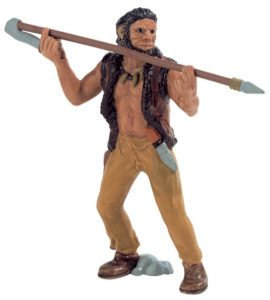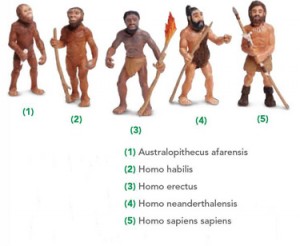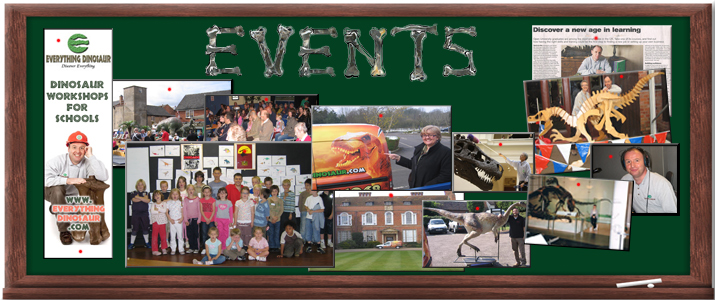Useful Teaching Resources for Key Stage 3 and 4 – Evolution of Mankind
With the retirement of the series of early hominid models manufactured by Bullyland of Germany, science teachers aiming to link the evolution of our species within the topic areas related to evolution and natural selection have been a little short on models for students to study. The German made series consisted of six replicas starting with a model of a Dryopithecus ape and concluding with a model of a Clovis Man complete with spear thrower. Sadly, this range went out of production three years ago, with team members at Everything Dinosaur working closely with the German museum market to secure the final stocks of these hand-painted, scale models.
The Evolution of Mankind
Homo sapiens (Bullyland Modern Man Replica)

A model of modern human being (H. sapiens).
Picture credit: Bullyland
The models provided a very visual illustration of the origin of our own species, which could lead onto extension activities where the effect of Darwin’s ground breaking book “The Origin of Species”, on Victorian society could be explored by the class.
The Evolution of Man
Fortunately, a new model series entitled “The Evolution of Man” is coming to the UK market very shortly. This model series consists of five replicas, each one represents an iconic hominin and helps to shed light on the evolution of our species. Sadly, we don’t have any female models included in the series. However, the manufacturer has been keen to show the development of tool use within this replica range. For example, the figure representing Homo erectus is holding a burning branch. It is widely believed that it was this species of hominin that first mastered the ability to make fire.
The Evolution of Man Model Series (2014 Production)

Tracing our evolution. The evolution of man model set.
Picture credit: Everything Dinosaur/Safari Ltd
The models begin with the Australopithecine which is thought by palaeoanthropologists to be the ancestor of the Homo genus – Australopithecus afarensis. The iconic “Lucy” is an example of this species. The set then moves onto the H. habilis “handy man” and then onto Homo erectus “upright man”. A Neanderthal is included and can be used to compare with the tools included with the modern human replica that concludes the series. It is likely that this set will be available in a handy blister pack for teachers.
To view the range of prehistoric figures available in the Safari Ltd range: Wild Safari Prehistoric World Figures.




